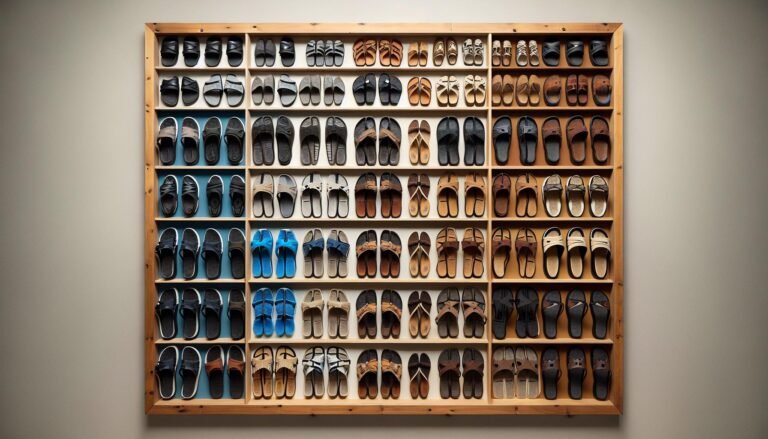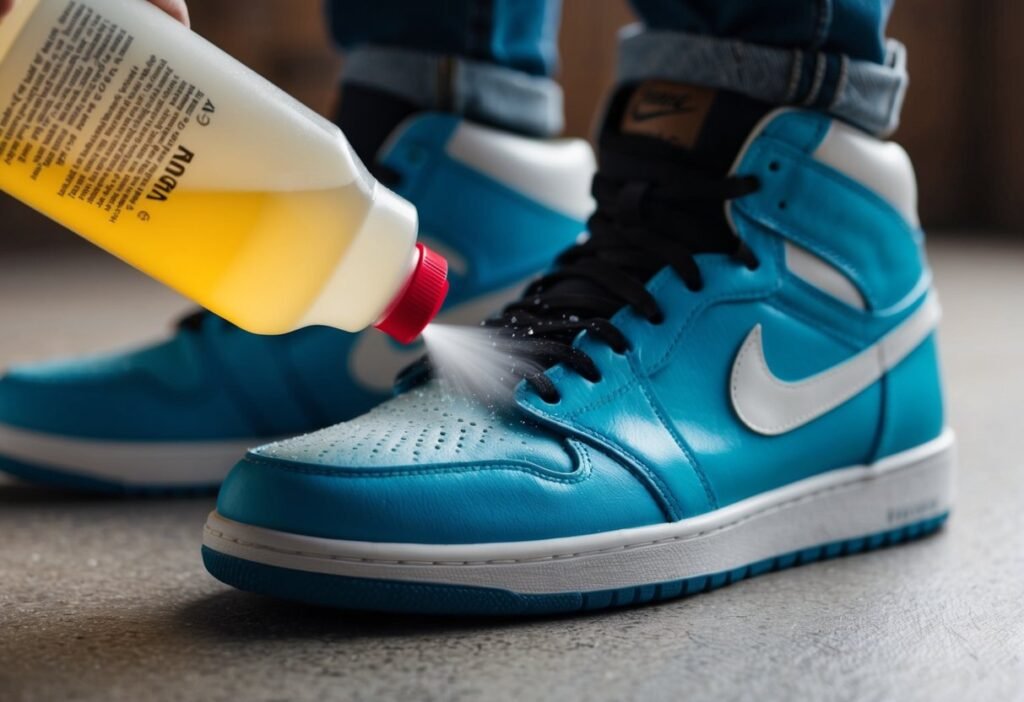How to Fix Peeling Leather Inside Shoes: Simple DIY Steps and Professional Tips
Peeling leather inside shoes can turn a stylish pair into a source of frustration. Whether it’s your favorite heels or everyday sneakers, this common issue not only affects the look but also the comfort of your footwear. Fortunately, with a few simple steps, you can restore the interior of your shoes and extend their lifespan.
Understanding why leather peels is the first step to fixing it. Often, it’s due to wear and tear, moisture, or poor-quality materials. By identifying the cause, you can choose the right method to repair the damage and prevent it from happening again. Let’s dive into practical solutions to bring your shoes back to their former glory.
Key Takeaways
- Identify Causes: Leather peeling inside shoes often results from wear and tear, moisture, poor-quality materials, or chemical exposure. Identifying the root cause helps in effective repair.
- Repair Methods: Utilize leather adhesives or DIY patching techniques to restore the peeling leather. Ensure thorough cleaning and drying before applying adhesives or patches for a secure bond.
- Professional Help: For extensive damage or valuable shoes, seek professional leather repair services. Professionals provide high-quality repairs, including conditioning, color restoration, and waterproofing.
- Preventative Care: Maintain leather shoe quality by cleaning regularly, moisturizing with a leather conditioner, and storing in a cool, dry place. Use recommended products for cleaning, conditioning, and protecting the leather.
Understanding Peeling Leather Inside Shoes
Leather inside shoes peels due to several factors. Wear and tear are the primary causes; friction from regular use degrades the material. Moisture exposure accelerates deterioration, with sweat being a common contributor. Poor-quality materials lead to quicker peeling as they lack durability. Chemical exposure, like harsh cleaning agents, also deteriorates leather integrity.
Effects Of Ignored Peeling
Ignoring peeling leather affects both aesthetics and functionality. Shoes start looking worn out and shabby, which diminishes their appeal. Peeling causes discomfort, as exposed inner layers can rub against the skin, leading to blisters or irritation. Decreased shoe lifespan is another consequence, with the structure weakening over time. Neglecting repairs means higher long-term costs when replacement becomes necessary.
Common Methods to Fix Peeling Leather

Using Leather Adhesives
Leather adhesives offer an effective solution for repairing peeling leather inside shoes. Begin by cleaning the affected area with a mild soap solution to remove dirt and oils. Dry the area thoroughly before applying the adhesive to ensure proper bonding. Specifically designed for leather, adhesives like Tandy Leather Eco-Flo Leather Weld or Loctite Vinyl, Fabric & Plastic Adhesive provide strong and flexible bonds.
Apply a small amount of adhesive evenly to both surfaces of the leather and press them together. Maintain pressure using clamps, rubber bands, or even heavy books to ensure a tight seal. Leave the adhesive to cure for at least 24 hours. After curing, inspect the area to ensure a proper bond. If the bond appears weak, repeat the application process. Regular maintenance checks help prevent future peeling.
DIY Patching Techniques
DIY patching techniques offer an easy and cost-effective way to fix peeling leather inside shoes. Start by choosing a patch material that closely matches the color and texture of the shoe leather. Materials like leather scraps or commercial leather patches are ideal options.
Cut the leather patch to a size slightly larger than the peeling area. Clean the area thoroughly and allow it to dry. Apply a thin layer of adhesive to the back of the patch and the peeling area. Press the patch firmly onto the leather, ensuring it covers the peeling section completely. Use a cloth or roller to smooth out any air bubbles.
Leave the patch to bond for at least 24 hours. After the bonding period, check the patch to ensure it’s securely attached. If necessary, apply additional adhesive around the edges for extra security. Patched areas should withstand regular shoe usage, extending the lifespan of the footwear. Regular inspection and timely repairs will help maintain the integrity of leather shoes.
Professional Solutions for Leather Repair

When to Seek Professional Help
For extensive damage or high-value shoes, professional services are often necessary. Issues such as significant peeling, structural damage, or intricate designs require skilled repairs that DIY methods can’t achieve. If the leather shoes are irreplaceable or hold sentimental value, consulting a specialist ensures the best results. Professional cobblers or leather repair shops use high-quality materials and advanced techniques that exceed what’s available to consumers.
Expected Costs and Services
Costs for professional leather repair vary based on the extent of the damage and the type of service required. Minor repairs, such as patching small areas or fixing light peeling, typically cost between $20 and $50. More extensive repairs, including complete interior relining or addressing severe structural issues, can range from $50 to $150. Some services may include leather conditioning, color restoration, and waterproofing, all aimed at extending the life of the shoes. Price variability depends on geographic location, the complexity of the repair, and the specific materials used.
Preventative Measures for Leather Care

Regular Maintenance Tips
Maintaining leather shoes involves several key practices. First, clean the leather surfaces with a soft cloth to remove dirt and grime. Neglecting this can lead to faster deterioration. Second, moisturize the leather using a specific leather conditioner like Lexol Leather Deep Conditioner every few months. Dry leather is prone to cracking and peeling. Third, store shoes in a cool, dry place. Excessive heat or humidity can damage the leather significantly.
Recommended Products for Leather Care
Using the right products ensures sustained leather quality. Leather cleaners like Chamberlain’s Leather Milk are effective for surface dirt removal without causing damage. Conditioners, such as Lexol Leather Deep Conditioner, offer hydration to prevent dryness and cracking. For protection, apply a waterproofing spray like Kiwi Protect-All. It guards against moisture and stains. It helps to use soft-bristled brushes to avoid scratching the leather surface during cleaning. Reliable brands include Kiwi and Sof Sole.
| Product | Use | Brand |
|---|---|---|
| Lexol Leather Deep Conditioner | Hydration | Lexol |
| Chamberlain’s Leather Milk | Cleaning | Chamberlain’s |
| Kiwi Protect-All | Waterproofing and Protection | Kiwi |
| Soft-Bristled Brushes | Gentle cleaning | Kiwi, Sof Sole |
Preventative measures when consistently applied preserve leather shoe quality and extend their lifespan.

Fixing peeling leather inside shoes requires understanding the causes and using the right techniques and products. DIY methods like using leather adhesives and patching can handle minor issues, while professional services are best for extensive damage. Regular maintenance and preventative care, including cleaning, conditioning, and proper storage, are essential for preserving leather quality and extending shoe lifespan. By following these steps, anyone can keep their leather shoes looking great and lasting longer.
Frequently Asked Questions
What causes leather inside shoes to peel?
Peeling inside shoes can be caused by factors such as poor-quality leather, excessive moisture, friction, and exposure to heat. Over time, these conditions weaken the leather, leading to peeling.
How can I fix peeling leather inside my shoes?
You can fix peeling leather by using leather adhesives like Tandy Leather Eco-Flo Leather Weld or Loctite Vinyl, Fabric & Plastic Adhesive. Apply the adhesive to the affected area and press firmly to ensure proper bonding.
Should I repair my shoes myself or hire a professional?
For minor peeling, DIY repairs may be sufficient. For extensive damage, high-value shoes, or intricate designs, it’s best to hire a professional cobbler or leather repair shop.
What is the cost of professional leather repair services?
The cost of professional leather repair services ranges from $20 to $150, depending on the complexity of the repair and materials used.
How can I prevent leather inside my shoes from peeling?
Prevent peeling by regularly cleaning and conditioning your leather shoes. Use products like Chamberlain’s Leather Milk for cleaning, Lexol Leather Deep Conditioner for hydration, and Kiwi Protect-All for waterproofing.
What products are recommended for leather care?
Recommended products include Chamberlain’s Leather Milk for cleaning, Lexol Leather Deep Conditioner for moisturizing, and Kiwi Protect-All for waterproofing and protection.
How often should I clean and condition my leather shoes?
Clean and condition your leather shoes every few months or as needed, depending on wear and exposure to elements. Consistent maintenance helps preserve leather quality.







My brother recommended I might like this web site He was totally right This post actually made my day You cannt imagine just how much time I had spent for this information Thanks
thanks 🙂